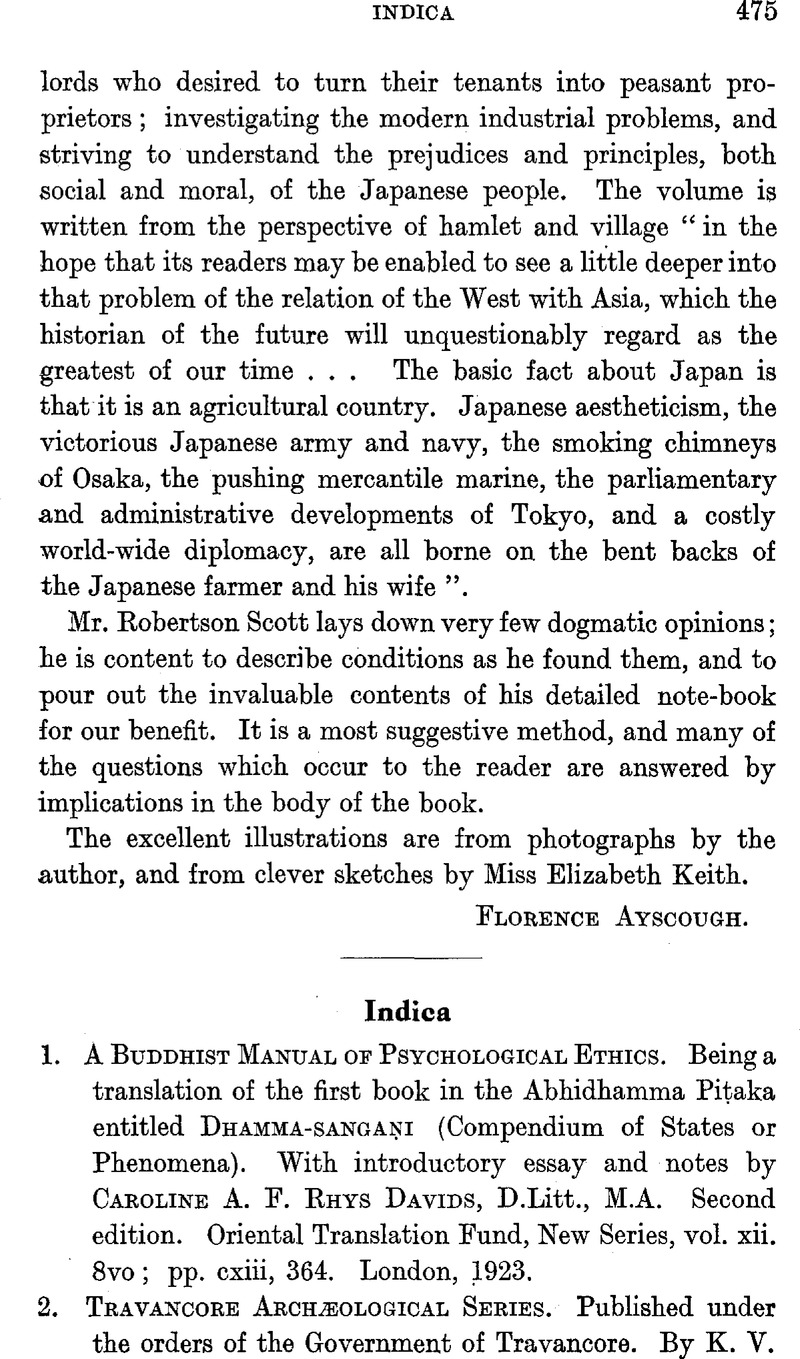No CrossRef data available.
Published online by Cambridge University Press: 15 March 2011

1 We may point to a few examples. Dr. Slater trusts to the broken reed of Mr. Oldham's speculations (p. 53), and asserts the Dravidian origin of the Brahman caste, but he ignores the fact that no trace of a native caste of the kind is to be found in the South (Brahmans repeatedly occur in the Śaṅgam poems, but there they are always Aryan foreigners). He says that “the distinguishing mark of the Brahman caste is the cord of cotton thread … which indicates an original association of the caste with cotton spinning, which certainly was no art of the Vedic Aryans” (p. 57), and again, that this cord “appears to be a very clear indication that Brahman supremacy has one of its roots in the descent of Brahmans from foreigners who earned the gratitude … of the population of India by teaching them to spin and weave” (p. 160). Unluckily for this pretty theory, the sacred cord was originally not of cotton, and it is not peculiar to the Brahmans : it is the property of all the three first castes of Aryans, and is the badge distinguishing the Aryan from the non-Aryan. The argument that “Sanskrit” was much easier to learn than Dravidian tongues (p. 17) is erroneous. The greatest difficulty in colloquial Tamil arises from its assimilation of consonants, which is a secondary development: primitive Dravidian in this respect is more faithfully represented by Kanarese and Telugu. None of these tongues colloquially is of excessive difficulty. The “Sanskrit” which met the ancestors of these tongues was quite as hard ; it is represented by the Vedic and the language of the Brāhmaṇas, with copious flexions and elaborate consonantism. Dr. Slater further suggests that Southern architecture is different in origin from that of Northern India (p. 66), which shows that he understands neither. He thinks that the refinement of Tamil indicates “priority of the Dravidians in attaining settled order and regular government” (p. 69); as the earliest Tamil (the Śaṅgam poems) is later than the Ṛgvēda by at least a thousand years, this argument is futile. He quotes as an instance of Dravidian culture the duodecimal system of numeration used in the island of Minicoy, in the Laccadives (p. 73); but the names of the numbers in this system, as reported by him, are purely Aryan, and the duodecimal system is well known among Aryans. On Indian religion some of his views display equal ignorance and perversity.” The discovery of the biological fact of human paternity,” he says (p. 103), “created the new gods Siva and Vishnu. Probably these two are only local variants of the same deity” ; neither of them is Vedic, he adds (p. 106 f.); and thence he proceeds to build up a perfectly absurd theory about Dravidians and buffaloes versus Aryans and oxen in re the biology of paternity and the worship of deities. He opines that “we may well see in Brahma the Sun God … imported” [from Egypt] “into India” (p. 110); and Sarasvatī “would appear to be a moon goddess” (p. 112). These are specimens of his arguments ; further discussion of them would be useless.